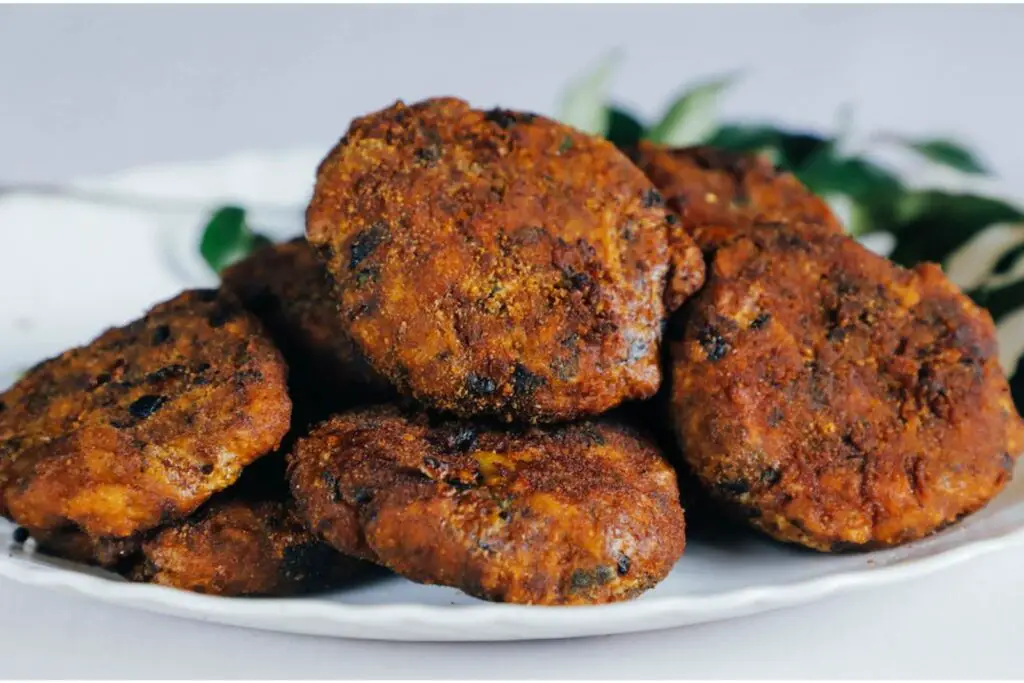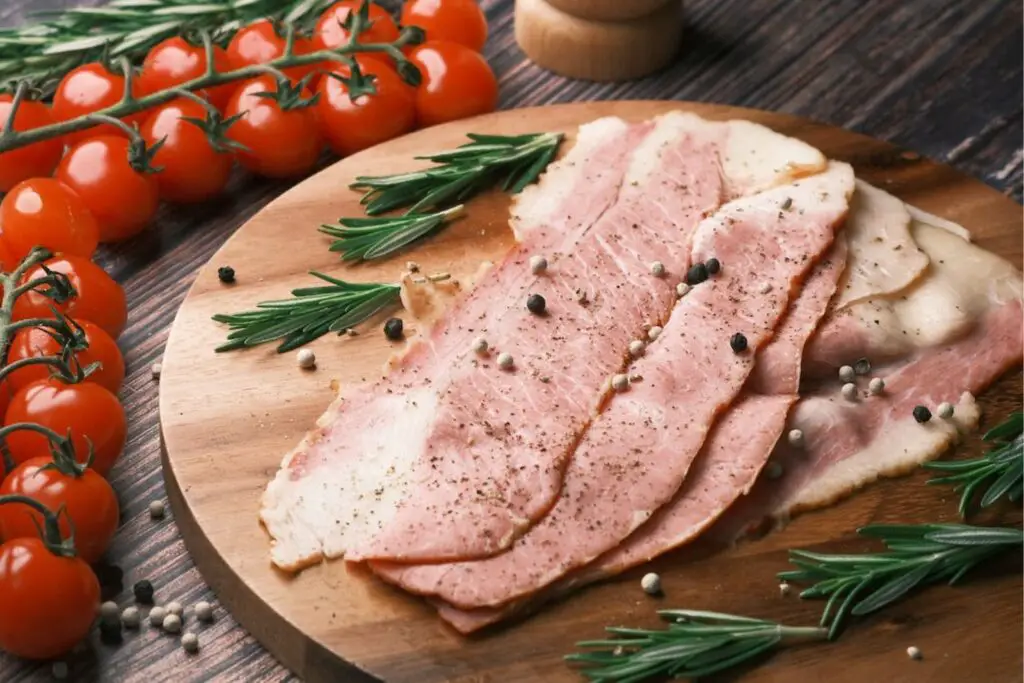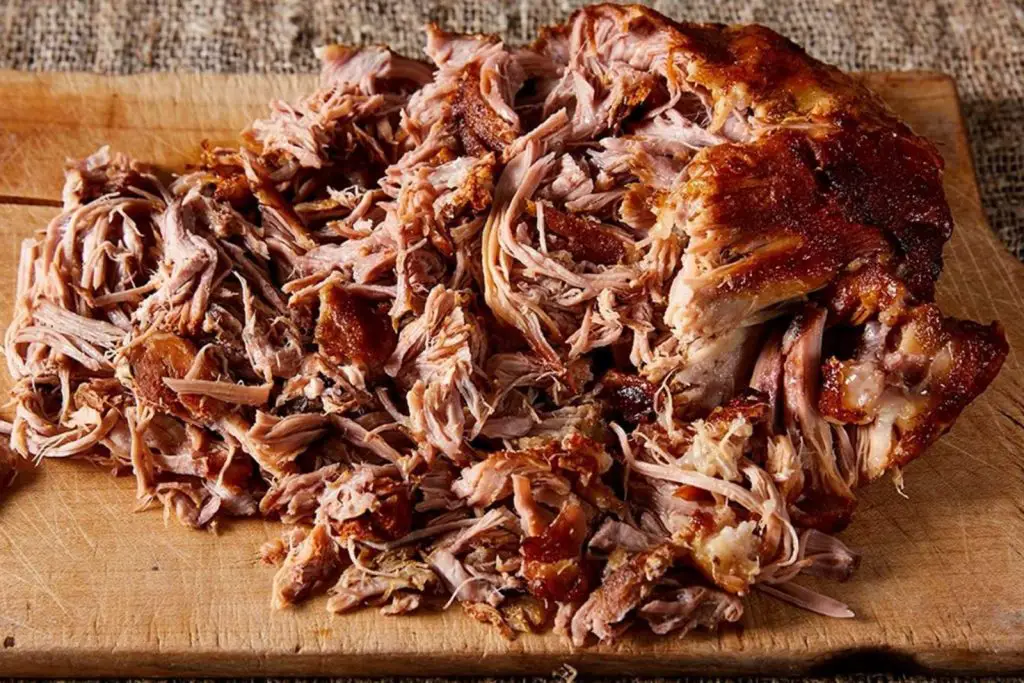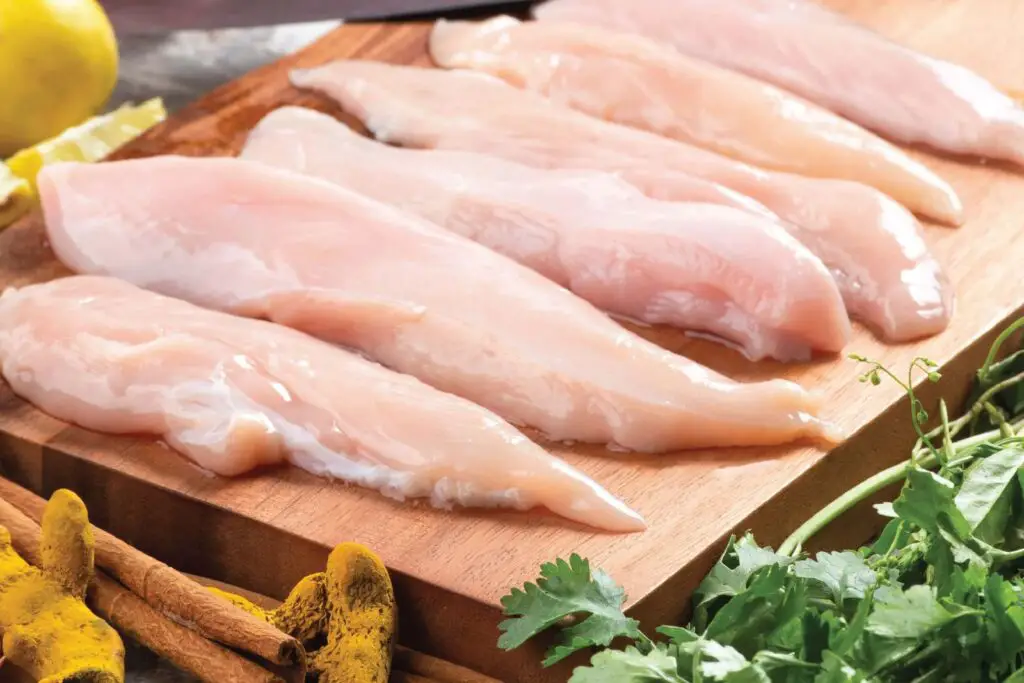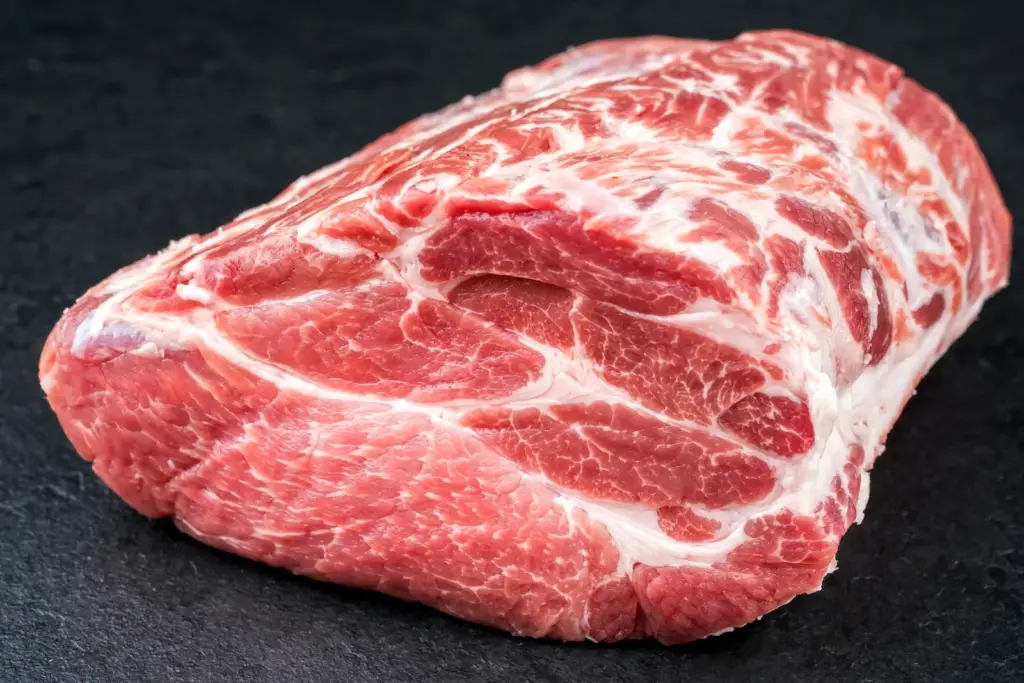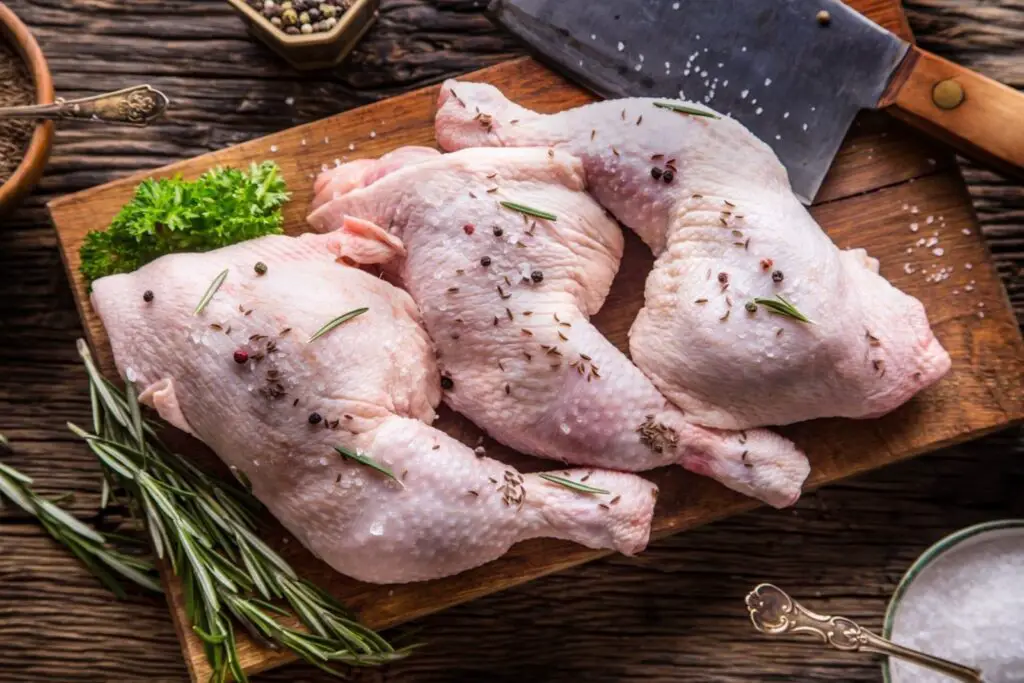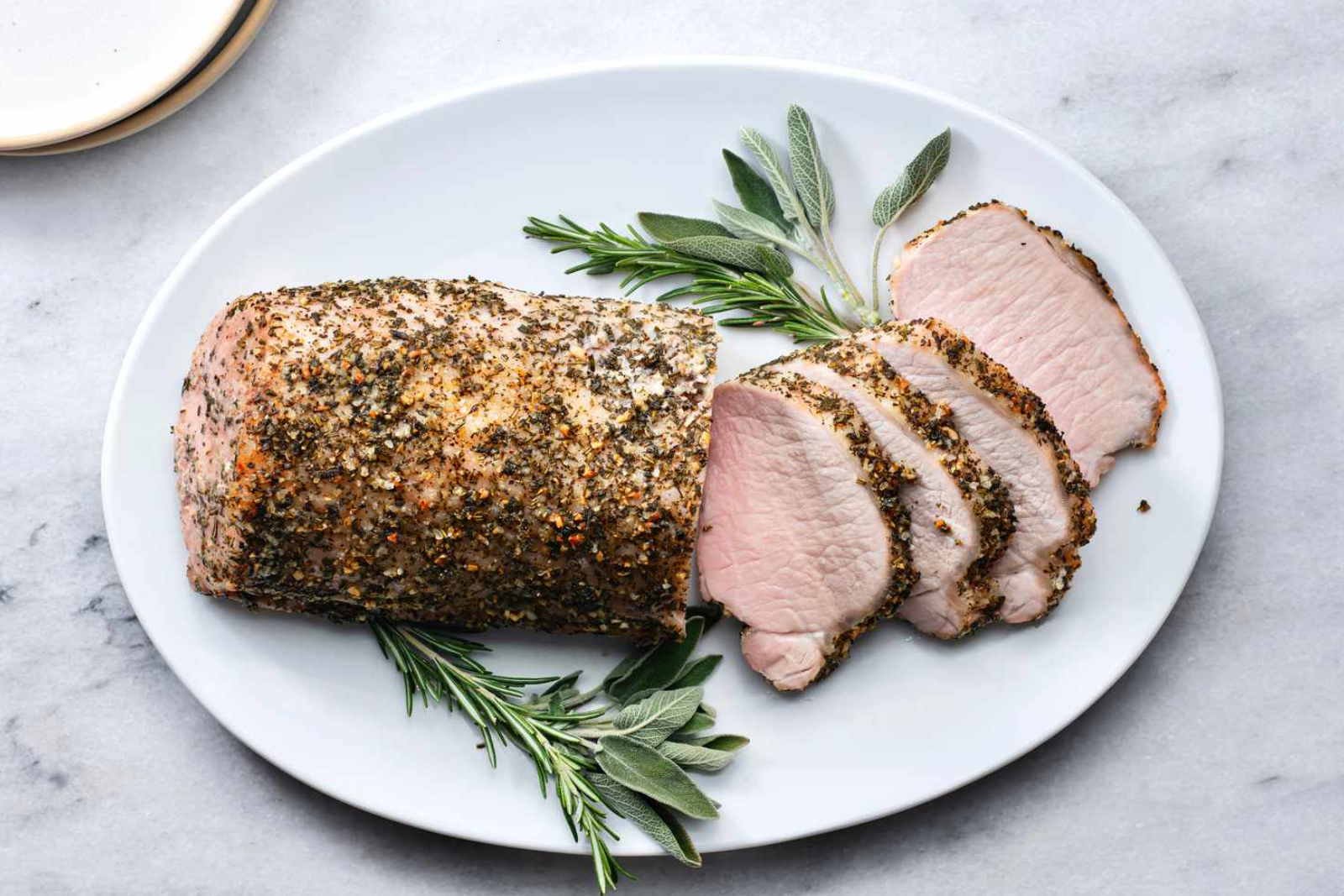
Pork roast is a versatile and flavorful cut of meat that can be enjoyed in various dishes. Whether you’re planning to save leftovers for later or want to stock up during a sale, freezing pork roast is an excellent way to preserve its quality and extend its shelf life. By following a few simple steps, you can ensure that your frozen pork roast retains its taste and texture. This article provides a step-by-step guide on how to freeze pork roast effectively.
Here’s a guide on how to freeze pork roast:
Step 1: Select a fresh pork roast
Choosing a fresh and high-quality pork roast is crucial for ensuring the best results when freezing. Here’s why it’s important:
- Quality preservation: Opting for a fresh pork roast guarantees that you start with a piece of meat that is at its peak in terms of flavor, tenderness, and overall quality. Freezing can help maintain these qualities if the meat is in excellent condition to begin with.
- Marbling of fat: When selecting a pork roast, pay attention to the marbling of fat throughout the meat. Marbling refers to the intramuscular fat that is distributed evenly within the muscle fibers. This fat plays a vital role in retaining moisture and flavor during the freezing process and subsequent cooking.
- Moisture retention: The fat in pork roast helps prevent the meat from drying out when exposed to low temperatures in the freezer. During freezing, ice crystals form within the meat, and if the meat lacks sufficient fat content, it may become dry and lose its succulence when thawed and cooked. The marbling of fat helps to counteract this by providing natural basting as the meat thaws and cooks.
- Flavor enhancement: Fat is a carrier of flavor, and the marbling in pork roast adds richness and depth to the taste. When the fat is distributed throughout the meat, it infuses every bite with its savory qualities. This becomes especially important when freezing meat, as some flavor loss can occur during the freezing and thawing process. The fat content helps to preserve and enhance the overall flavor profile.
Step 2: Prepare the pork roast
Preparing the pork roast properly before freezing is essential to maintain its quality and prevent any issues during the freezing and reheating process. Here’s why it’s important:
- Packaging removal: It is crucial to remove any packaging or wrapping that the pork roast came in. This includes plastic wrap, foam trays, or absorbent pads. These materials may not be suitable for long-term freezer storage and can contribute to freezer burn or off flavors. Removing them ensures that the meat is properly exposed to the freezing conditions and reduces the risk of undesirable effects.
- Drying the meat: Patting the pork roast dry with paper towels helps remove any excess moisture on the surface of the meat. Moisture can lead to the formation of ice crystals, which can degrade the quality of the meat during freezing. By drying the pork roast, you create a better environment for the freezing process, promoting better texture and taste when the meat is thawed and cooked.
- Trimming excess fat: Trimming excess fat from the pork roast is an optional step but can be beneficial, especially if you plan to reheat the meat later. Fat has a tendency to become greasy when reheated, and excessive fat content can contribute to this issue. Trimming the fat helps prevent an overly greasy texture and can enhance the overall eating experience. However, it’s important to leave an appropriate amount of fat to maintain moisture and flavor during cooking.
How should I package uncooked pork roast slices for freezing?
To package uncooked pork roast slices for freezing, place them in a single layer on a baking sheet or tray and freeze until firm. Once firm, transfer the slices into airtight freezer bags or wrap them tightly in plastic wrap or aluminum foil. This method allows for easy portioning and prevents the slices from sticking together.
Step 3: Wrap the pork roast tightly
Wrapping the pork roast tightly before freezing is crucial for protecting the meat from air exposure and preventing freezer burn. Here’s why it’s important:
- Air exposure prevention: When meat is exposed to air, it can lead to the formation of freezer burn. Freezer burn occurs when moisture from the meat’s surface evaporates, leaving it dehydrated. This results in dry, discolored patches and can negatively impact the texture and flavor of the pork roast. Wrapping the meat tightly creates a barrier that limits air contact and helps maintain its moisture content.
- Freezer burn prevention: Freezer burn not only affects the taste and texture of the meat but also causes it to deteriorate faster. By tightly wrapping the pork roast, you create a protective layer that reduces the chance of freezer burn. Plastic wrap or aluminum foil are commonly used for this purpose, as they provide a secure seal and minimize air circulation around the meat.
- Preservation of quality: When pork roast is wrapped tightly, it helps preserve its quality during freezing. The moisture and natural juices are retained within the meat, ensuring that it remains tender and flavorful when thawed and cooked. Additionally, tightly wrapped meat is less prone to absorbing odors from other foods in the freezer, preserving its original taste.
- Convenience and portion control: Tightly wrapping the pork roast also offers the advantage of convenient storage and portion control. By wrapping it individually, you can freeze single portions or smaller portions suitable for your needs. This allows you to thaw and use only the desired amount without having to defrost the entire roast.
Step 4: Place in a freezer bag or airtight container
After tightly wrapping the pork roast, placing it in a freezer bag or an airtight container provides an extra layer of protection against freezer burn and helps preserve the taste and texture of the meat. Here’s why it’s important:
- Enhanced insulation: Freezer bags and airtight containers offer additional insulation for the wrapped pork roast. They provide an extra barrier that helps prevent air from reaching the meat, reducing the risk of freezer burn. This is particularly beneficial if the original wrapping, such as plastic wrap or aluminum foil, is not thick or durable enough to fully protect the meat.
- Moisture retention: Pork roast contains natural moisture, and retaining this moisture is crucial for preserving its tenderness and juiciness. Freezer bags and airtight containers help seal in the moisture, preventing it from evaporating during freezing. This helps maintain the meat’s overall quality and prevents it from becoming dry or tough.
- Odor and flavor protection: Placing the wrapped pork roast in a separate freezer bag or airtight container helps protect it from absorbing odors and flavors from other foods in the freezer. This is particularly important if you have strong-smelling items nearby. By keeping the pork roast isolated, you ensure that it retains its original taste and doesn’t take on any unwanted flavors.
- Easy organization: Using freezer bags or airtight containers also helps with organization in the freezer. It keeps the pork roast neatly contained, prevents it from being squished or damaged by other items, and allows for easy stacking or arranging. This can be especially beneficial if you plan to freeze multiple pork roasts or if you want to maximize space in your freezer.
Step 5: Label and date the package
Labeling and dating the package containing the frozen pork roast is essential for organization and proper usage. Here’s why it’s important:
- Identification of contents: Labeling the package with the contents, in this case, “pork roast,” allows for easy identification in a freezer with multiple items. It saves you from the hassle of having to inspect each package to find what you’re looking for. Clear labeling ensures that you can quickly locate the pork roast when you need it.
- Storage time tracking: Dating the package with the freezing date is crucial for tracking the storage time of the frozen pork roast. This information helps you monitor how long the meat has been in the freezer. It is recommended to consume frozen pork roast within a specific timeframe to maintain its quality. By having a clear date on the package, you can ensure you use the oldest frozen pork roast first and minimize the risk of keeping it in the freezer beyond its recommended storage period.
- Freshness and quality control: Properly labeled packages with accurate dates allow you to keep track of how long the pork roast has been frozen. Over time, the quality of frozen meat may deteriorate in terms of texture and flavor. By following the recommended storage time, you can maintain the freshness and overall quality of the pork roast for the best culinary experience.
- Inventory management: Labeling and dating the package contribute to efficient inventory management. It helps you keep track of the quantity of frozen pork roast you have in stock. This way, you can plan your meals accordingly and avoid waste or unexpectedly running out of frozen pork roast.
Step 6: Store in the freezer
Proper storage of the packaged pork roast in the freezer is crucial to maintain its quality and extend its shelf life. Here’s why it’s important:
- Optimal temperature: The coldest part of the freezer, such as the back or bottom shelf, provides a more consistent and colder temperature. Placing the pork roast in this area helps ensure that it remains at a stable freezing temperature, minimizing the risk of temperature fluctuations that can compromise the quality of the meat.
- Air circulation: It’s important to allow for adequate air circulation around the packaged pork roast. Sufficient air circulation helps maintain a uniform temperature throughout the freezer and prevents the formation of localized cold spots. This promotes even freezing and helps preserve the texture and flavor of the meat.
- Storage duration: While pork roast can be stored in the freezer for up to 6 months, it is recommended to consume it within 2-3 months for the best quality. Over time, the texture and flavor of the meat may start to deteriorate due to freezer burn, oxidation, and loss of moisture. By adhering to the recommended storage duration, you ensure that the pork roast maintains its optimal taste and texture when cooked.
- Freezer organization: Placing the packaged pork roast in a designated area in the freezer helps with organization and accessibility. It allows you to easily locate the pork roast when you need it without having to search through a cluttered freezer. Proper organization also prevents the package from getting damaged or crushed by other items in the freezer.
Step 7: Thaw and cook frozen pork roast
Thawing frozen pork roast properly before cooking is crucial for food safety and optimal results. Here’s why it’s important:
- Maintaining quality: Thawing the pork roast slowly in the refrigerator helps maintain the meat’s quality by allowing it to thaw evenly and gently. This gradual thawing process helps preserve the texture, moisture, and flavor of the meat, resulting in a more succulent and enjoyable final dish.
- Food safety: Thawing frozen meat at room temperature or using quick thawing methods can promote bacterial growth and increase the risk of foodborne illnesses. Thawing the pork roast in the refrigerator provides a controlled and safe environment, as the cold temperature inhibits the growth of harmful bacteria. This reduces the risk of foodborne illnesses and ensures that the pork roast is safe to consume.
- Even cooking: Thawing the pork roast before cooking ensures more even cooking throughout the meat. When meat is cooked from a frozen state, the outer layer can become overcooked while the center remains partially frozen. Thawing the pork roast allows for consistent cooking and helps achieve the desired doneness throughout the meat.
- Preferred recipe preparation: Thawing the pork roast gives you more flexibility in preparing it according to your preferred recipe. Whether you plan to roast, braise, or slow-cook the meat, thawing allows for better seasoning, marinating, and overall preparation. It also ensures that the pork roast cooks more evenly and reaches the desired level of tenderness and flavor.
To thaw the frozen pork roast, transfer it from the freezer to the refrigerator. Thawing times may vary depending on the size and thickness of the meat but generally require several hours or overnight. It is essential to place the pork roast on a tray or in a container to catch any potential drips and prevent cross-contamination.
Once the pork roast is fully thawed, follow your preferred recipe for cooking. Whether you roast it in the oven, simmer it in a slow cooker, or prepare it using another method, ensure that the meat reaches the appropriate internal temperature for safety.
Other related questions
Can I refreeze pork roast?
No, it is generally not recommended to refreeze pork roast after it has been thawed. Once thawed, the pork roast should be cooked and consumed or safely stored in the refrigerator for a limited time. Refreezing the pork roast increases the risk of bacterial growth and can negatively affect its quality and taste.
How do I know if the pork roast has gone bad after being frozen?
To determine if a frozen pork roast has gone bad, look for signs such as a foul odor, unusual discoloration (e.g., gray or greenish spots), or a slimy texture. If the meat feels mushy or has an off-putting smell, it is likely spoiled. Additionally, if the pork roast has been stored for an extended period beyond the recommended storage time, it is advisable to err on the side of caution and discard it to avoid potential foodborne illnesses.
Can I freeze leftover cooked pork roast?
Yes, you can freeze leftover cooked pork roast. Allow the meat to cool completely before packaging it in an airtight container or freezer bag. Properly stored, cooked pork roast can be frozen for up to 2-3 months. Thaw it in the refrigerator before reheating and consuming.
Can I freeze pork roast marinated in a sauce?
While it is possible to freeze pork roast that has been marinated in a sauce, it is important to consider the ingredients of the marinade. Acidic marinades may affect the texture of the meat during freezing. If you plan to freeze a marinated pork roast, ensure the marinade is well-distributed and properly stored to maintain quality.
Can I freeze pork roast with bones?
Yes, you can freeze pork roast with bones. The bones may affect the freezing and cooking times slightly, but they do not pose any safety concerns. Just ensure that the roast is tightly wrapped and properly stored to maintain its quality during freezing.
Can I freeze a pork roast that has been seasoned or spiced?
Yes, you can freeze a seasoned or spiced pork roast. Seasonings and spices can be applied to the meat before freezing, adding flavor to the roast as it thaws and cooks. However, keep in mind that flavors may intensify during freezing, so adjust the seasoning accordingly to avoid overpowering the taste of the final dish.

